
Fibers of Place: Michele Brody reconstructs local plants into visual reflections
Interview by: Olivia Ann Carye Hallstein
Integrating site-specific process-oriented paper making, Michele Brody addresses questions of localness, the natural world, and plant indigenousness. At her recent exhibition at St. Michael’s College in Vermont, presented in partnership with ecoartspace, Michele’s work reflects on both biodiversity and its loss. As a papermaker, her topic is the very fiber of her art and study whether in Vermont or in the Bronx. Her international experience has created a portfolio and knowledge base that truly embodies the idea of the “GLocal”. In our interview she discusses her experience in Vermont, her inspirations, and her process.
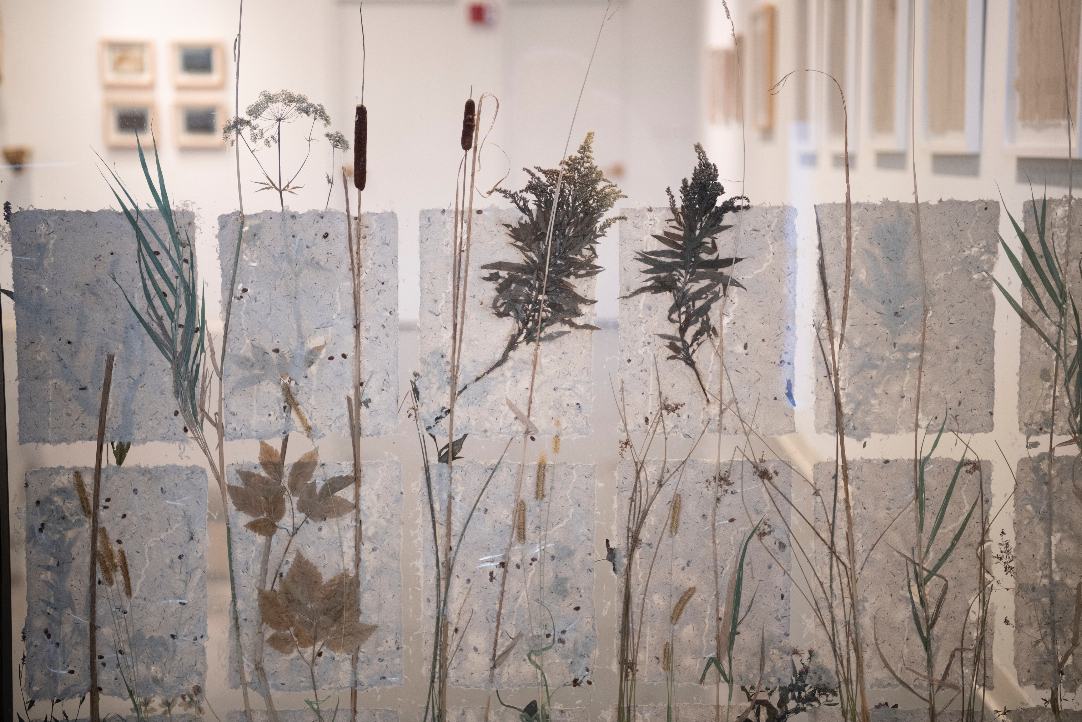
Entrance detail, handmade paper with local flora
Hi Michele! What first struck me about your body of work is that you have worked creating site-specific pieces based on the local flora and fauna all over the world. How has the St. Michael’s College, Vermont area inspired you in a unique way?
When I was invited to exhibit at St. Michael’s college, the Director Brian Collier invited me to come up for a preview visit. He especially wanted to show me the School’s Nature area. A property that for years had been rented out to a farmer. Once the school regained control of the land again, they decided to let it naturally go back to being a Riparian Forest. When I went it was still in the early stages of re-growing native species such as Goldenrod, Milkweed and in the distance Cotton wood trees. I was especially excited to see Cattails growing along a natural marsh that the local beavers helped to create so that the land could go back to being a native wetland. I was especially inspired by the narrow swath of a walkway cut into the tall meadow throughout the nature area. I wanted to re-create this experience as one entered the gallery. The feeling of walking through the tall grass meadow sprouting up on either side of you.
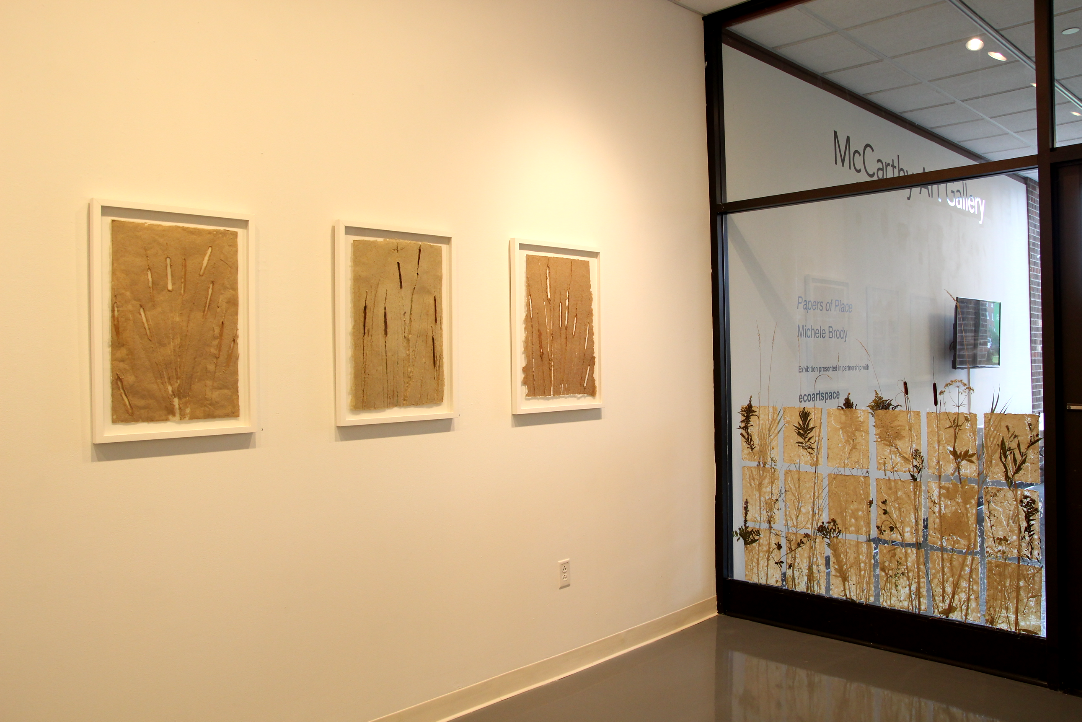
Exhibition entrance, handmade paper with local flora
Native plants are so central to your work, and we are living in a time when climate change is ever-present. What aspects of changing climate and resilience measures did you become aware of during your time in Vermont?
Ironically, it was not until I started driving again after not owning a car for 20 years that I became more aware of the abundance of plant life along the roads and highways. While diving up to Vermont I was most attuned to looking for Cattails and Milkweed which are both Native to the area, but less and less available due to be crowded out by the non-native species of Phragmites and Mug wort. But once I entered Vermont, I was pleasantly surprised to see more of the native species growing along the highways. I believe this is mainly due to Vermont being less developed than the rest of the Northeast. Also, while on site at Saint Michael’s it was exciting to learn about the “Nature area” project to return farmland to being a natural wetland. The beavers were especially happy about this, and the fruits of their labors could certainly be seen, as well as the return of native species taking back the land.
Your knowledge and observations about the nature around you are so intimate. What have these plants taught you about the world that people often overlook?
The main thing I have learned that no matter what we as humans try to do to control and manage Nature, especially with the development of monocultures and agriculture, Nature will in the end find its own way to survive. It may not be the same as before, such as having non-native species take over the land where natives once thrive. But over time, nature will find its own balance and become once again more diverse and in abundance.
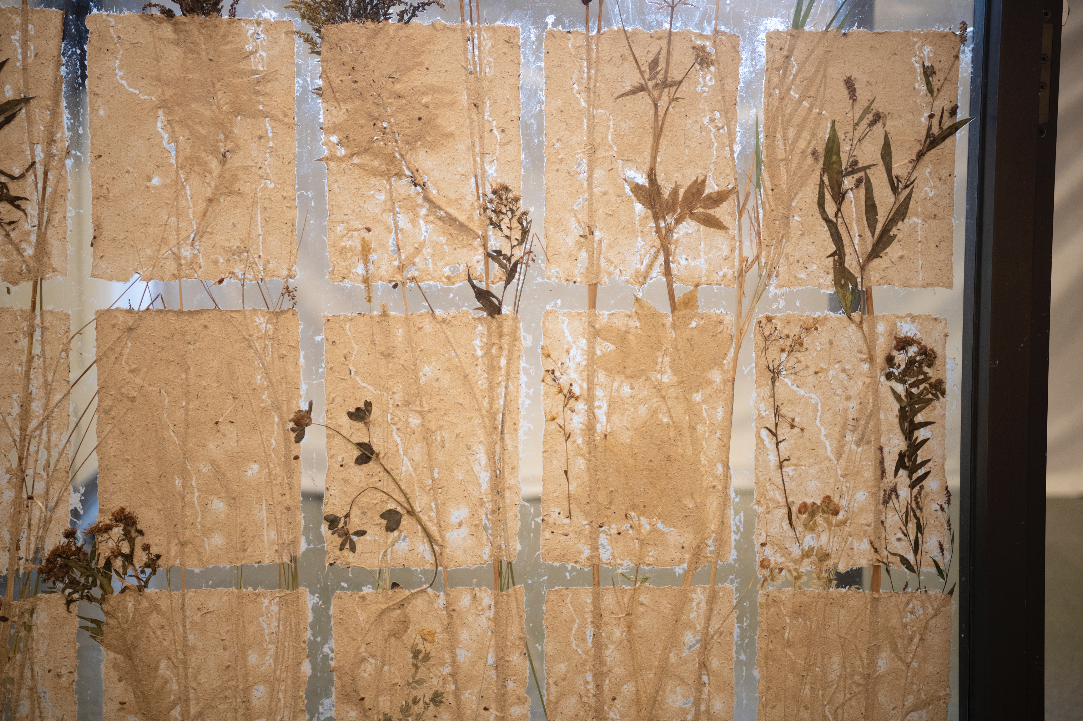
Exhibition entrance, handmade paper with local flora
Since we are talking about balance, I noticed that several pieces use both positive and negative space and imprinting to leave reliefs of local flora. What is the intention you have behind integrating some flora and imprinting others? And what role do non-native or Indigenous plants play?
Much of my current work is inspired by Rachel Carson’s seminal book “Silent Spring.” The title for this series that integrates positive and negative imprints of local flora is "Nature in Absentia." The goal of "Nature in Absentia" is to illustrate how the current loss of ecological biodiversity within the natural environment due to over development, pollution and climate change is in stark contrast to the ever expanding cultural and racial diversity throughout the world. The impetus is to deconstruct and redefine the traditional practice of categorizing plants and animals as either native, non-native or invasive within a particular ecosystem in comparison to the ever-growing diversity of human populations through immigration, and to see how being sensitive to cultivating a balance between plant species can be mirrored in humans.
In this effort to deconstruct and redefine traditional categorizations, you are using site-specific fibers. How has your medium and process inspired you in your work?
The show in Vermont is titled after a recent series of handmade paper works called Papers of Place. For this series I have been producing handmade paper collages with pulp processed from natural seasonal detritus gathered from specific locations related to my practice and home. The series started when I was working as an Artist in Residence in 2018 at the Wave Hill Cultural Center and Garden in the Riverdale section of The Bronx. The work is very processed oriented involving the choice of location and plants, watching the seasons, knowing when best to harvest and gather materials, drying out and pressing the plants, then soaking the plants in water to loosen the fibers (which can get rather stinky in a one-bedroom apartment/studio), then I boil the fibers, pulverize the fibers in a beater until finally I can then get down to actually making the paper.
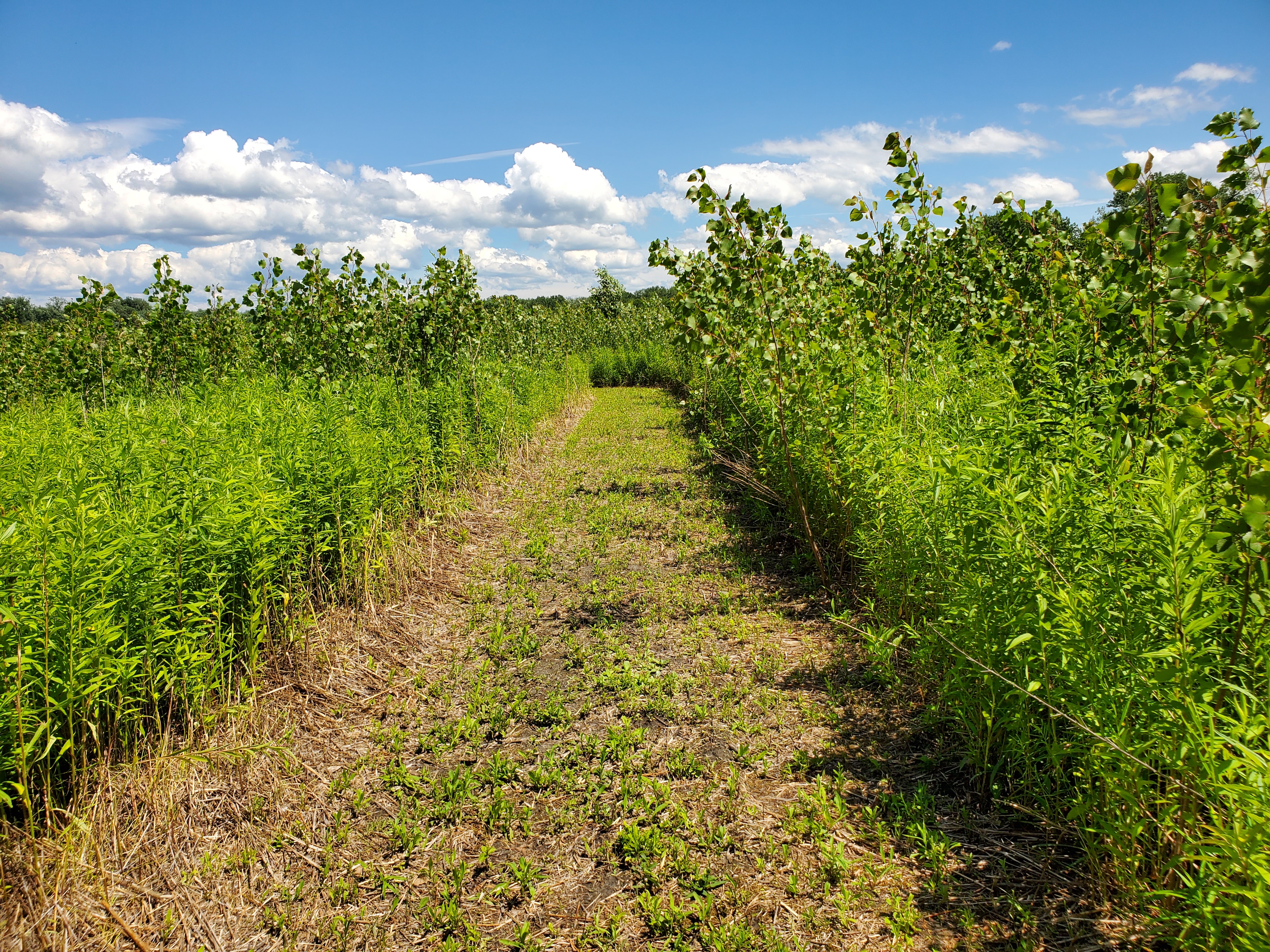
St. Michael’s Nature Area/Riparian Forest, Vermont
I believe it! And admire your dedication despite your space limitations. As a result, many of your works present organic forms which are often textural and allow the viewer to see the elements you have added. What is your visual philosophy regarding viewership and these textures?
The essence of my practice thrives on the interaction with new communities by exploring what it means to establish roots within an unfamiliar environment. With each new location I conduct a careful investigative method that involves the gathering of regional materials, native plants, local stories, and historic research. I employ this process to create site-generated works of art that illuminate the unobserved in our day-to-day surroundings and the challenges facing our environment. I am intrigued with the process of creating a controlled environment where the work organically develops and changes over time. Building from this foundation, my work represents the daily flux and naturally occurring entropy surrounding us, while exploring how memory and time simultaneously erode and enhance the interpretations of our experiences.
And lastly, what can art do that other forms of reflection and observation miss?
Art has a way of communicating beyond language. Some can be heavy hitting and political, but the most successful artworks are the ones that subtly change one’s point of view, revealing things that may not have been seen before. Providing the viewer with a new outlook on the world, and hopefully a better appreciation for the beauty found in all things, in particular the day-to-day environment we take for granted.
Thank you, Michele! It has been fantastic to interview you and very inspiring to think of the literal integration of a subject in an artwork.
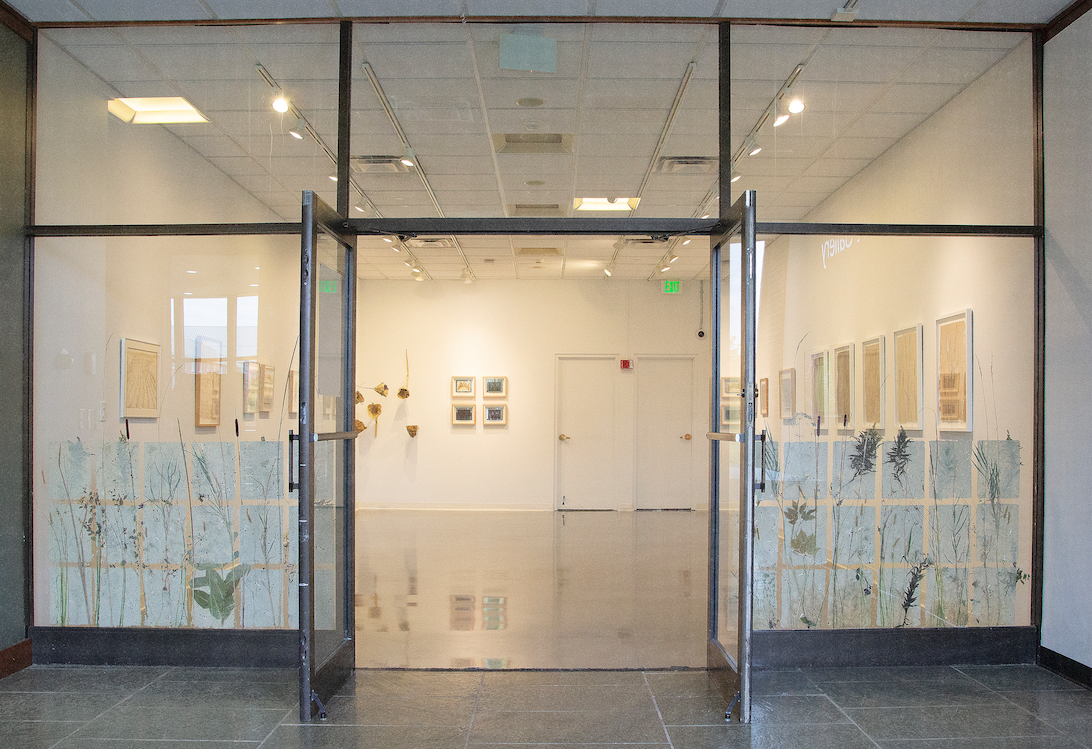
Papers of Place at McCarthy Art Gallery, St. Michael’s College, Vermont (closed October 29, 2022)